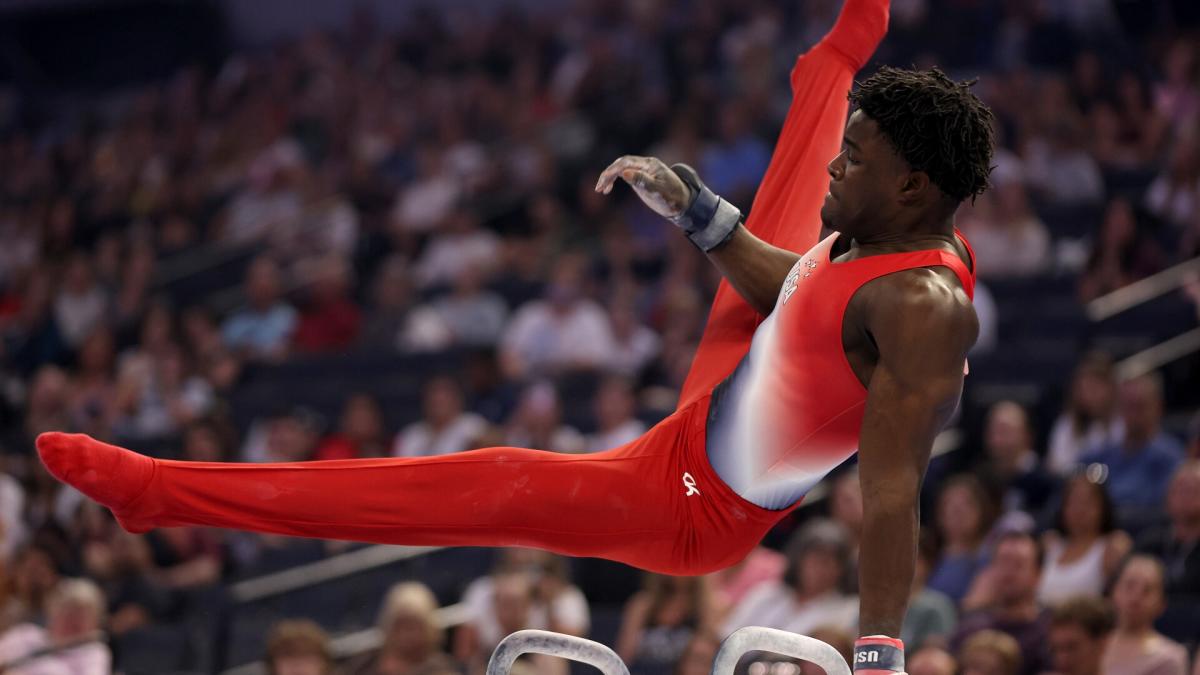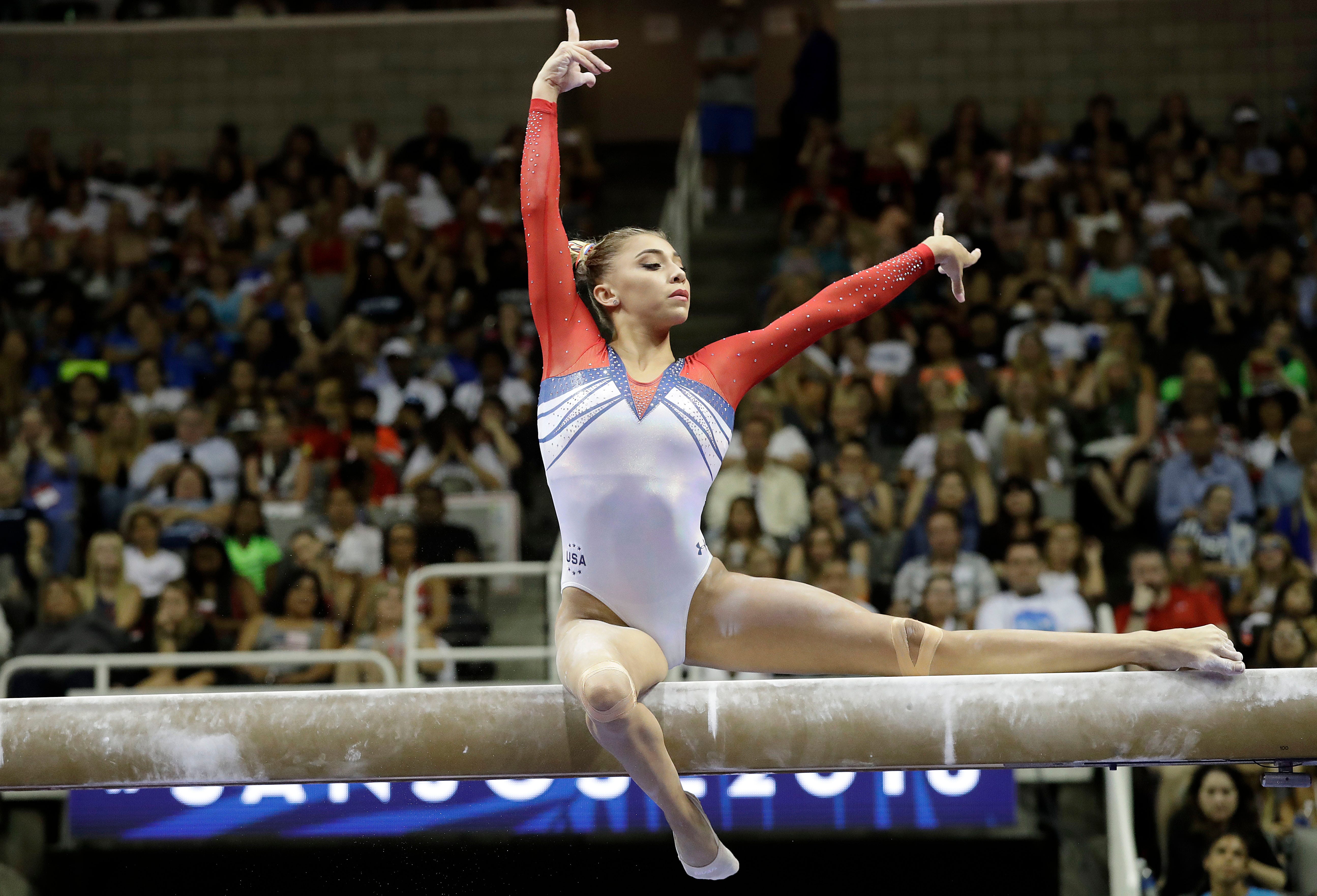Gymnastic Olympic Trials
:max_bytes(150000):strip_icc():focal(749x176:751x178)/Olympic-Gymnastics-Team-Trials-062724-3-9ec0c1f8b62d4ec9a69db5b7becf318f.jpg)
The Gymnastic Olympic Trials are a crucial event in the world of gymnastics, serving as the primary platform for selecting the United States’ top gymnasts to represent the country at the Olympic Games. These trials have a rich history and have undergone significant evolution over the years.
Origins and Historical Significance
The origins of the Gymnastic Olympic Trials can be traced back to the early 20th century. In the early 1900s, the United States Gymnastics Federation (USGF) began organizing national championships to determine the country’s top gymnasts. These championships served as a preliminary selection event for the Olympic Games, which were first held in 1896.
The gymnastic olympic trials are a grueling test of athleticism and determination. Gymnasts push their bodies to the limit, and injuries are not uncommon. In fact, a recent study found that over 50% of gymnasts experience an injury during their career.
These injuries can range from minor sprains and strains to more serious injuries, such as fractures and dislocations. If you are a gymnast, it is important to be aware of the risks of injury and to take steps to protect yourself.
For more information on gymnastics olympic trials injury, please visit gymnastics olympic trials injury.
Over time, the national championships evolved into the Gymnastic Olympic Trials, which became the official qualifying event for the Olympics. The first official Gymnastic Olympic Trials were held in 1964, and they have been held every four years since then.
The gymnastic olympic trials are a grueling test of athleticism and endurance, pushing athletes to their physical limits. The intense training and competition can take a toll on their bodies, leading to various gymnastics injuries. These injuries can range from minor sprains and strains to more serious conditions like fractures and dislocations.
Despite the risks, gymnasts continue to push themselves to achieve their Olympic dreams.
Evolution of the Trials
The Gymnastic Olympic Trials have undergone several changes over the years, including modifications to eligibility criteria and competition format. Initially, the trials were open to all eligible gymnasts, but in 1992, the USGF introduced a two-tiered system, which divided gymnasts into senior and junior levels.
The competition format has also evolved over time. In the early years, the trials were held over a single day, but they have since been expanded to a multi-day event. The current format includes a preliminary round, where gymnasts compete in all four events (vault, uneven bars, balance beam, and floor exercise), and a final round, where the top-ranked gymnasts compete for the Olympic team spots.
Athlete Profiles and Training Regimens
The road to the Olympic Trials is paved with relentless dedication and unwavering determination. These exceptional athletes have dedicated their lives to honing their craft, pushing their physical and mental limits to secure their place among the nation’s elite gymnasts.
Their training regimens are a testament to their unwavering pursuit of perfection. They endure countless hours in the gym, meticulously refining their techniques and building the strength, flexibility, and endurance required to soar through the air with grace and precision.
Notable Athletes
- Simone Biles: A living legend, Biles has dominated the sport for years, showcasing unparalleled skill, power, and artistry. Her signature moves, such as the “Biles II” and “Amanar,” have redefined the boundaries of gymnastics.
- Sunisa Lee: The reigning Olympic all-around champion, Lee is known for her exceptional balance and elegant execution. Her consistency and ability to perform under pressure make her a formidable competitor.
- Jade Carey: A specialist on the vault and floor exercise, Carey possesses incredible power and explosiveness. Her signature “Carey” vault, a double-twisting Yurchenko, is one of the most difficult vaults in the world.
Training Regimens, Gymnastic olympic trials
These athletes’ training regimens are grueling and demanding, often involving multiple sessions per day. They meticulously balance strength training, conditioning exercises, and skill work to develop the comprehensive abilities required for gymnastics.
Strength training focuses on building muscle mass and strength to support their demanding routines. Conditioning exercises, such as running and swimming, enhance cardiovascular fitness and endurance. Skill work involves practicing specific gymnastic movements to refine technique and develop muscle memory.
The sacrifices these athletes make are immense. They often forgo social events, limit their sleep, and endure physical pain to pursue their Olympic dreams. Their unwavering commitment and determination serve as an inspiration to all who witness their journey.
Competition Format and Scoring System: Gymnastic Olympic Trials
The Gymnastics Olympic Trials are a multi-day event that determines which gymnasts will represent the United States at the Olympic Games. The trials are held in two stages: the preliminary round and the final round.
In the preliminary round, gymnasts compete in all four events: vault, uneven bars, balance beam, and floor exercise. The top 24 gymnasts in the all-around standings advance to the final round.
In the final round, gymnasts compete in two rounds of competition. In the first round, they compete in the same four events as in the preliminary round. The top 12 gymnasts in the all-around standings advance to the second round.
In the second round, gymnasts compete in two events of their choice. The scores from the two rounds are combined to determine the final all-around standings. The top six gymnasts in the all-around standings earn a spot on the Olympic team.
Scoring System
The scoring system used in the Gymnastics Olympic Trials is based on the Code of Points, which is set by the International Gymnastics Federation (FIG). The Code of Points is a complex system that takes into account a number of factors, including the difficulty of the skills performed, the execution of the skills, and the overall presentation of the routine.
Each skill is assigned a difficulty value, which is based on the number of flips, twists, and other difficult elements that are included in the skill. The execution of the skill is also taken into account, with deductions being made for errors such as falls, wobbles, and incomplete rotations.
The overall presentation of the routine is also considered, with deductions being made for things such as lack of artistry, poor choreography, and inappropriate music.
The final score for a routine is the sum of the difficulty value, the execution score, and the presentation score.

